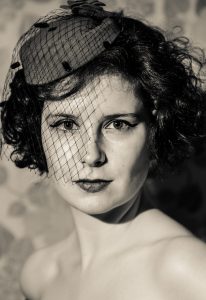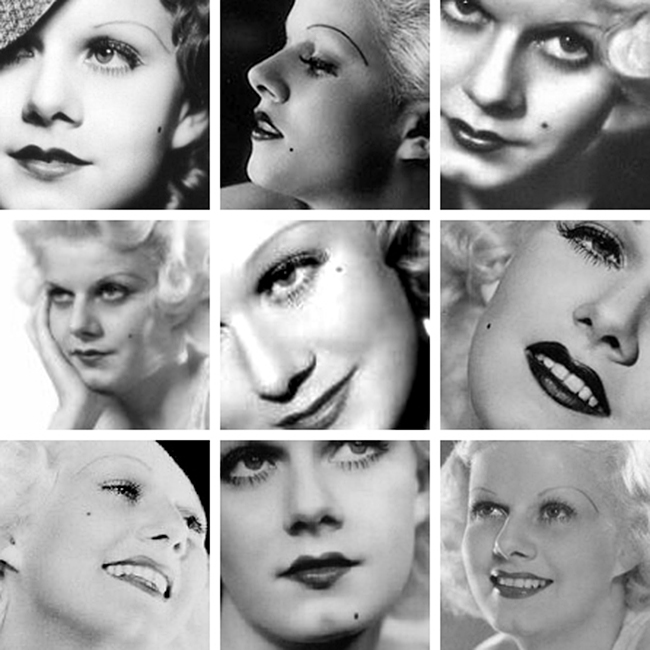The Beauty Mark in Western Culture: A Remarkable History
When thinking about beauty spots, Marilyn Monroe’s famous cheek mark automatically pops to mind. Nearly sixty years after the actress’ tragic death, her little mole is still legendary. So much so, many people get a Monroe piercing to approximate it. Not only Marilyn, but also fellow stars like Sophia Loren, Gloria Swanson, Edie Sedgwick and Etta James sport(ed) one, drawn on or not. Unsurprisingly, the beauty spot is now associated with, well, beauty. But we’ve come a long way. Take a quick look with me into the astounding history of the beauty mark in the occidental world.
Antiquity
The Greco-Romans had a mythical explanation for facial moles. Their theory was that the gods were concerned about mortals who were gorgeous enough to rival with their divine beauty. So, the gods decided to send dark spots down from Olympus to spoil perfect faces. You guessed it, the ancient Greco-Romans loved spotless skin. They did, however, use fake moles made out of leather to conceal scars and pimples. With ‘they’ I mean the higher classes. Slaves and peasants weren’t supposed to hide anything.
Our friends from ancient times may have been slightly obsessed with beauty marks. Scribes back then spent a lot of thought on the meaning of facial moles. They even came up with mappings. For example, if you had a mark close to the mouth, you could well be gluttonous. Hippocrates himself worked this theory further out, based on astrology.
Middle Ages
Western medieval people were not big on moles. At all. Nobody tried to pull an imperfection off as a beauty mark, it could mean getting hanged as a witch. Why? Moles obviously meant you were possessed by a demon. Or you were a demon pretending to be human. Either way, it wasn’t good. Any bodily abnormality, including pimples and birthmarks, was a sign of witchcraft to the medieval eye. They called them “witches’ teat.” Since everyone has some kind of irregularity, it was very easy to condemn a suspect. And else the torturing would do the trick.
Renaissance
During the Renaissance, higher class white Europeans went for ghostly pale, perfect skin. It was basically the height of poshness back then. If there were any blemishes, they would be covered up with black dots, once again to fake beauty marks.
Seventeenth & Eighteenth Century
I don’t believe anyone was so crazy about fake beauty spots as our ancestors from the 1600s and 1700s. In 1603, the English queen Elizabeth I ruled that wearing makeup was acceptable and people of all classes started to apply … stuff on their faces. Working women, for example, put flour on for a paler complexion. High(er) class ladies went for mostly poisonous cosmetics, like arsenic face powder. You can imagine the damage those materials did to the skin. Regular outbreaks of smallpox didn’t exactly help the case. In an attempt to camouflage the (often considerable) damage as well as possible, fake beauty spots were in high demand.
Alas, the British Parliament – entirely male – decided that women wearing fake moles wasn’t a look they supported. In 1650 these gentlemen introduced a bill to prevent “the vice of painting, wearing black patches, and immodest dresses of women”. Of course beauty marks were bound to become the height of fashion after this.
By the eighteenth century, artificial moles were the rage in courts all over Europe. Every gender wore mouches (French for ‘flies’) made out of cloth, leather and even mouse fur. If you had the money for it, you could get really creative with your marks. Moons, stars, hearts, squares, flowers and horse drawn carriages were just some of the possibilities. For a while there, making elaborate patches became a successful industry.
Lower class people used artificial marks too, but they had more urgent problems than thinking about a stylish shape to put on their face. They just stuck to their own handmade circular designs.
Victorian & Edwardian Periods
Some people never really warmed up to artificial beauty marks. During the Victorian era they became less and less popular. By mid-nineteenth century even natural moles were seen as a disgrace. The Victorians and Edwardians were all for a fair complexion free of blemish. There were even chemical skin whitening products on the market to bleach away moles, freckles and any form of discoloration. And although makeup was only deemed appropriate for actresses and prostitutes, there was a rise in the sale of concealers and foundations. Ladies secretly rubbed these on, to get those much hated blemishes out of sight.
1920s to Present Day
Hollywood changed all of that. During the 1920s, film attendance boomed and feature films gained popularity. Faces appeared in close-up on big screens in every small town. It changed the focus from complexion to eyes, eyebrows and lips. Instead of being used for getting a perfectly smooth skin (although still important), the main goal of makeup was now to put some colour into your look. Actresses – and some actors – started to accentuate their natural beauty marks or simply drew some fake ones on, in order to get a more unique look and show off their best features. Once again, real and fake beauty spots were all over the place. And they’ve never been entirely gone since.
Though magazine covers for some reason still often Photoshop freckles and facial moles away, overall they’re at least accepted in this period of western history. In some cases even embraced, like Cindy Crawford’s iconic birthmark. Of course, there are always people who are mean about any physical feature that’s not one hundred percent ordinary. But people like that urgently need to get a life.
Are you a worried about a mole, be it on your face or body? Please go see a doctor to get it checked, even if it’s just to be sure. Skin cancer is a very real danger.




“In 1630, the English queen Elizabeth I ruled that wearing makeup was acceptable and people of all classes started to apply … stuff on their faces.” Do you mean 1603? That is also the year she died.